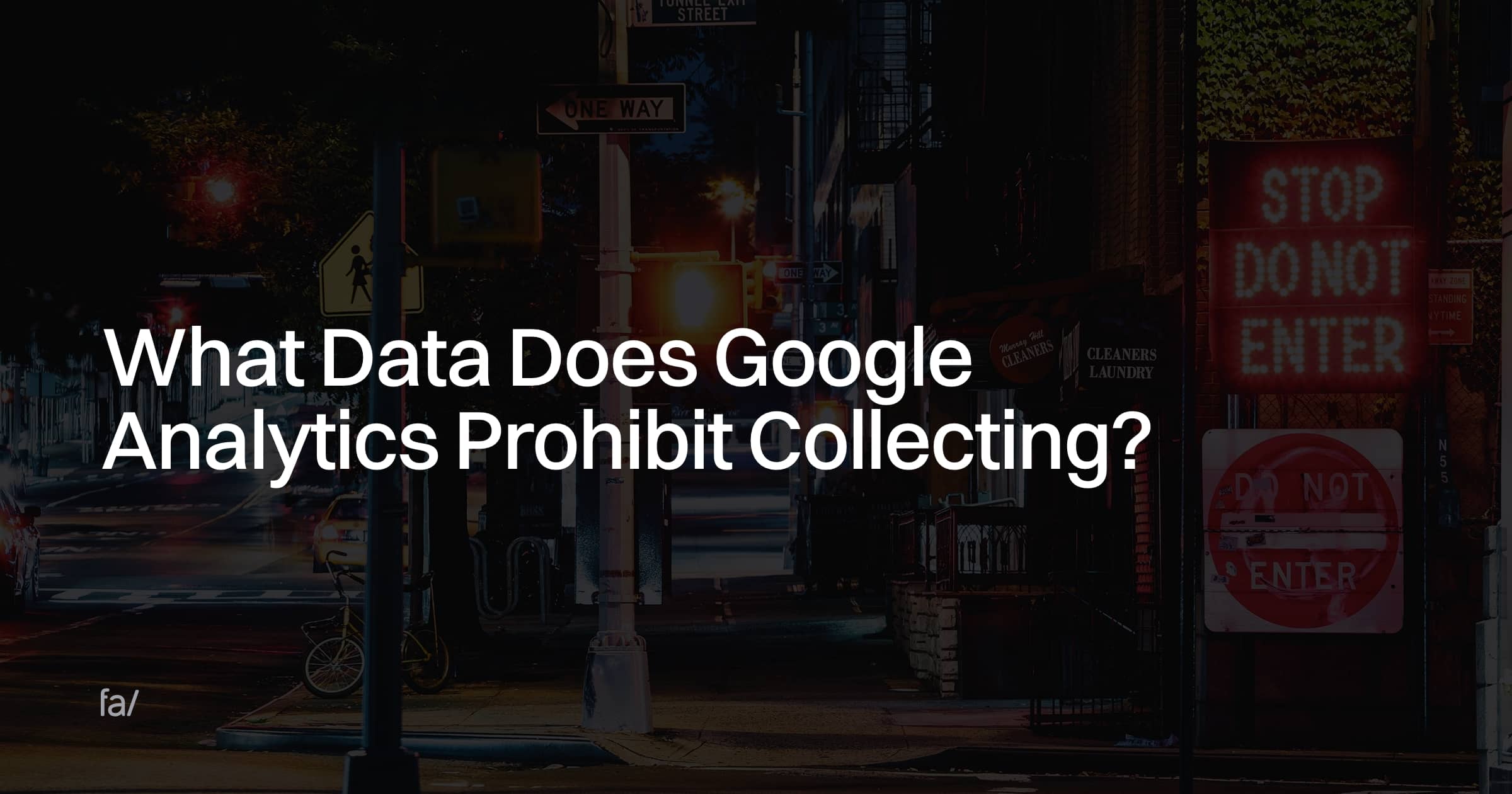Exploring Google Analytics: What Data Does Google Analytics Prohibit Collecting?
Exploring Google Analytics: What Data Does Google Analytics Prohibit Collecting?
Blog Article
Understanding the Art of Conquering Data Collection Limitations in Google Analytics for Better Decision-Making
In the world of electronic analytics, the ability to remove significant insights from information is paramount for notified decision-making. By employing tactical strategies and advanced methods, organizations can boost their data top quality, unlock concealed understandings, and lead the way for more enlightened and efficient choices.
Data Top Quality Assessment
Data top quality evaluation entails assessing various aspects such as accuracy, completeness, consistency, and timeliness of the data. One key element to think about is data precision, which refers to just how well the data shows the real worths of the metrics being determined.
Completeness of data is one more crucial consider evaluating information high quality. It involves making certain that all needed data points are accumulated which there are no spaces in the information. Insufficient data can skew analysis results and impede the ability to obtain a detailed sight of individual actions or internet site performance. Consistency checks are also important in data high quality analysis to determine any type of discrepancies or anomalies within the information set. Timeliness is similarly important, as out-of-date information might no more matter for decision-making procedures. By focusing on data high quality assessment in Google Analytics, organizations can improve the dependability of their analytics records and make even more enlightened decisions based on accurate understandings.
Advanced Tracking Techniques
Making use of sophisticated monitoring techniques in Google Analytics can significantly boost the deepness and granularity of data accumulated for more comprehensive evaluation and understandings. One such method is occasion tracking, which permits the surveillance of certain interactions on a web site, like clicks on buttons, downloads of documents, or video clip views. By implementing event tracking, organizations can get a much deeper understanding of user actions and interaction with their online content.
Furthermore, custom dimensions and metrics supply a method to customize Google Analytics to particular business demands. Custom-made dimensions enable the creation of brand-new information points, such as user functions or customer sectors, while personalized metrics enable the monitoring of special efficiency indications, like income per individual or average order worth.
Additionally, the utilization of Google Tag Supervisor can improve the implementation of monitoring codes and tags throughout a website, making it simpler to take care of and release advanced tracking setups. By harnessing these sophisticated tracking methods, services can open valuable understandings and maximize their on-line approaches for better decision-making.
Custom Measurement Application
To improve the depth of information gathered in Google Analytics beyond sophisticated tracking methods like occasion monitoring, businesses can apply custom-made dimensions for even more tailored insights. Custom-made dimensions enable companies to define and collect certain data factors that pertain to their distinct goals and purposes (What Data Does Google Analytics Prohibit Collecting?). By designating custom-made dimensions to various components on a website, such as user interactions, demographics, or session information, companies can gain a much more granular understanding of exactly how users engage with their online residential or commercial properties

Acknowledgment Modeling Approaches
By using the best attribution design, businesses can properly connect conversions to the suitable touchpoints along the customer trip. One typical acknowledgment version is the Last Interaction version, which provides debt for a conversion to the last touchpoint a user communicated with before transforming.

Data Experiencing Avoidance
When dealing with large quantities of data in Google Analytics, getting over data sampling is vital to make sure exact understandings are acquired for informed decision-making. Information sampling occurs when Google Analytics estimates patterns in data instead of analyzing the total dataset, potentially causing skewed results. To avoid data sampling, one effective strategy is to lower the day range being analyzed. By concentrating on shorter period, the chance of coming across experienced data reductions, offering an extra accurate depiction of customer behavior. In addition, using Google Analytics 360, the premium variation of the system, can assist minimize tasting as it enables greater data limits before tasting begins. Carrying out filters to limit the data being evaluated can also assist in avoiding sampling concerns. By taking these positive actions to minimize data sampling, services can draw out much more accurate understandings from Google Analytics, causing much better decision-making and boosted total efficiency.
Verdict
To conclude, grasping the art of getting rid of information collection limitations in Google Analytics is crucial for making notified decisions. By conducting a thorough information quality assessment, implementing sophisticated monitoring methods, making use of customized measurements, utilizing attribution modeling approaches, and avoiding information tasting, companies can make certain that they have exact and trustworthy data to base their decisions on. This will eventually result in more reliable methods and better end results for the organization.

Report this page